When Do You Know the True Eye Color of Cats
The World's Population Past Eye Color
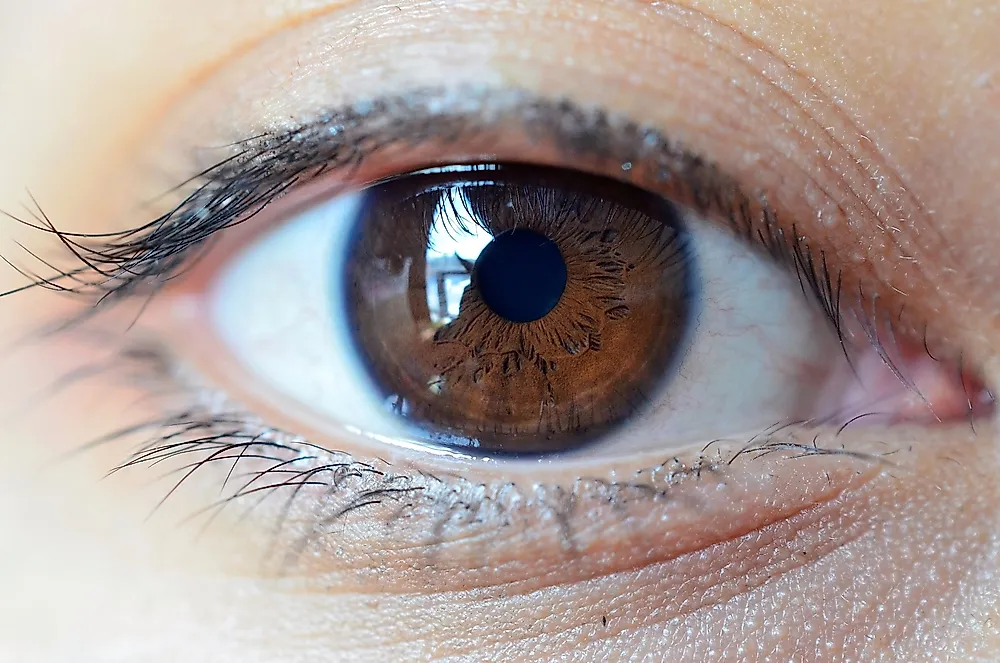
- The vast majority of the world's population has chocolate-brown optics, with blueish coming in a very afar second.
- While just 2% of the world has green eyes and nigh 10% have blue eyes, 86% of people in Ireland and Scotland have i of these two colors.
- Albinos have red eyes considering of their lack of pigmentation in the centre exposes the claret vessels underneath.
Some say your eyes are the windows to your soul. Are you lot filled with regret, joy, or sadness? Is your soul troubled or bursting with triumph? Your eyes volition reveal it all if someone has the risk to expect in them, many believe. What is non discussed as much is why our eyes' colour can vary and then much, from where our colors originate and how they came to be. Why does she accept optics the colour of chocolate, yet his eyes seem to reflect the sea? From brown to dark-green and "heterochromia," the world'south eyeballs reflect our vastly varied genetic landscape.
Brown - seventy% to 79%
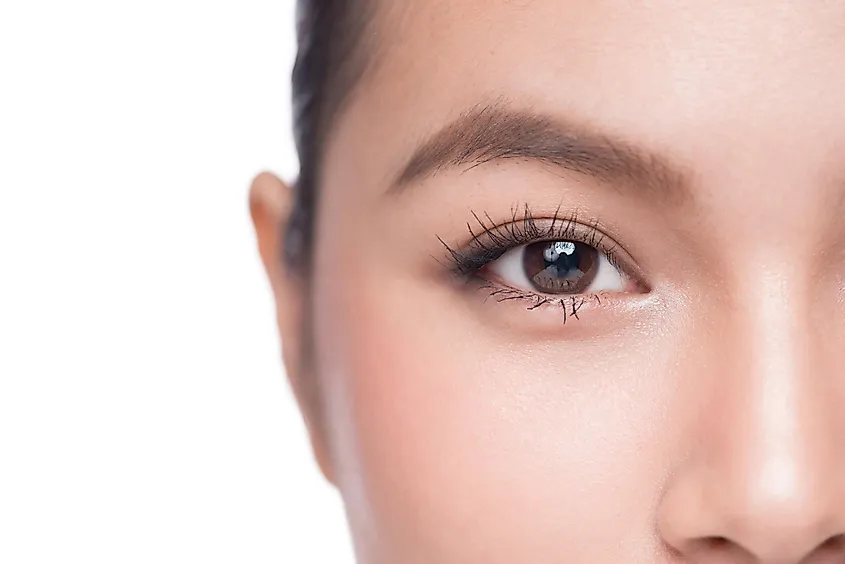
You lot may have already noticed this fact: a majority of the world's population has brownish optics. In fact, somewhere between seventy% and almost 80% of people have brown optics, making brown the most common eye colour globally.
If you have dark-brown optics, it is likely because at least one of your parents does. Middle color is partially genetic, and the genes for brown eyes are thought to exist dominant. This means that if 1 of your parents has an heart colour other than brown, but i has dark-brown eyes, yous as well will have brownish eyes.
Your middle colour is as well determined by the way your iris scatters calorie-free as it passes through it, called Rayleigh scattering, and the amount of melanin in your skin. Melanin is a skin pigmentation produced by your trunk. The more melanin you have, the darker your eyes will be.
Blue - 8% to x%
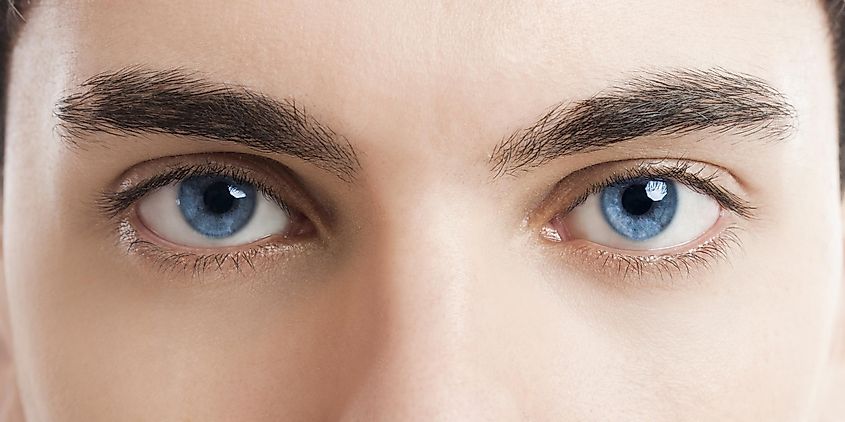
Blue is the 2d most common type of eye color on Earth in humans. Only between 8% and ten% of humans tin can boast having blueish optics, however. Interestingly, a genetic mutation thought to have occurred between half dozen,000 and x,000 years ago is the origin of this eye color. The mutation resulted in a "switch" that turned off the genetic machinery for chocolate-brown eyes.
If you have blueish eyes and come across someone else who does, you are said to share something else between you: one ancient, common antecedent.
Hazel - five%
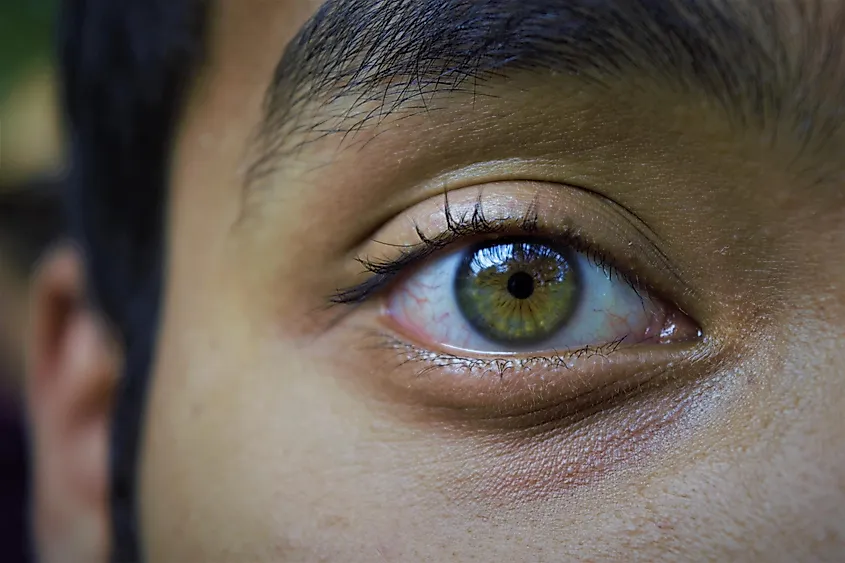
If you take hazel eyes, you take a combination of colors at play in your iris. These eyes are a mixture of green and orange or gold, almost like a cat's eyes. While only about anyone can have this colour, information technology occurs most commonly in North Africa, the Middle East, Brazil, and in people of Spanish ancestry.
Amber - 5%
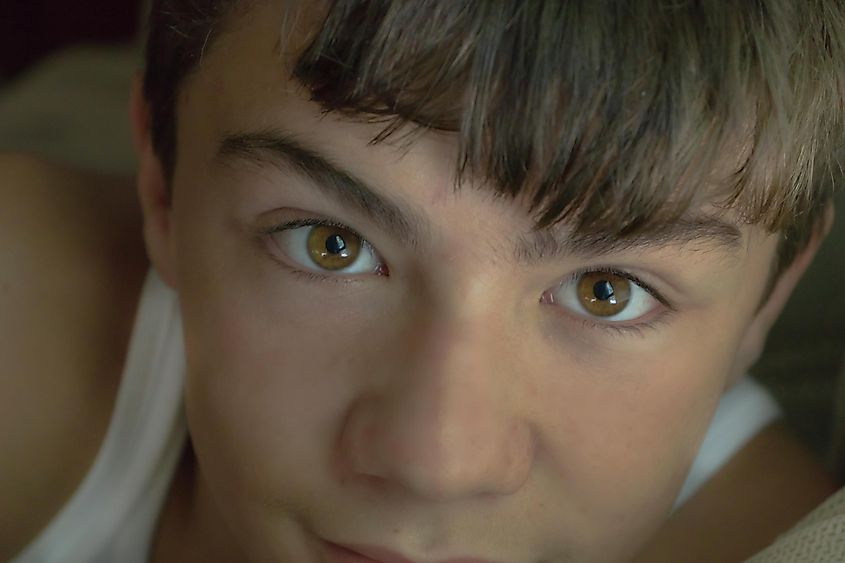
Like hazel eyes, just about 5% of the globe's population has bister-colored eyes. This heart colour is a light brownish, sometimes rusty. People of Asian, Spanish, South American, and South African descent are more likely to take amber eyes.
Gray - iii%
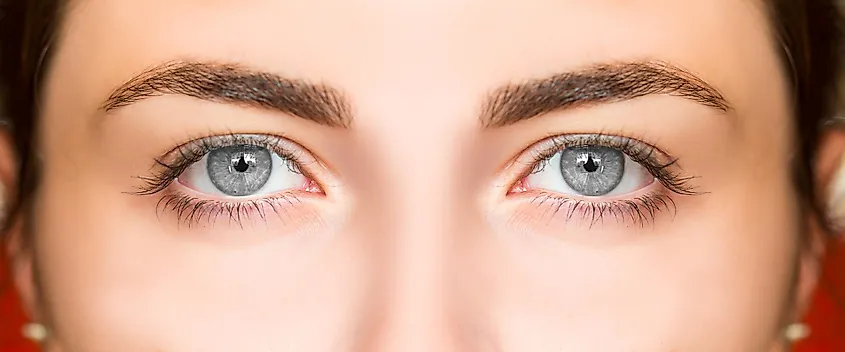
Aye, some people really accept eyes the color of your cat. People with grayness optics have irises that do non incorporate any melanin, and extra amounts of collagen in the centre called the stroma. This blocks blue coloring from surfacing in their eyes, resulting in a steely gray hue.
Dark-green - ii%

Beckoning like glimmering emeralds, light-green eyes are some of the rarest in the world. Despite this, some areas take a huge concentration of green-eyed people. While rare elsewhere, light-green and blue-eyed people are so mutual in Republic of ireland and Scotland that over 86% of the population has them. People are non born with green eyes, even so, merely abound into them. All babies are born with either blue or dark-brown eyes, and they tin develop greenish eyes by about half-dozen months erstwhile.
Green eyes are formed past a combination of calorie-free-brown and yellowish pigmentation, combined with Rayleigh scattering. Outside of Republic of ireland and Scotland, people with green optics live more often than not in Northern Europe.
Blood-red/Violet - <ane%

It may be shocking to come across red and violet in a list of eye colors for humans, but it happens in rare cases. Less than one% of the earth'south population really have red or violet eyes. A person can appear to have violet optics when they lack pigmentation in their eyes, and light reflects off their blood vessels. People with carmine eyes are typically albinos. The lack of pigmentation in their skin causes the blood vessels to appear, giving them reddish optics.
Heterochromia - <i%
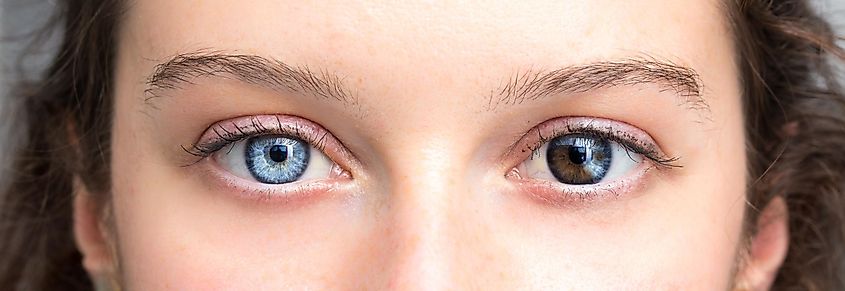
What the heck is heterochromia? This term refers to people who have eyes of two different colors. Some people have two colors inside both eyes, and others have a different color for each eyeball. "Heteros" in Greek means different, and "chroma" ways color. Unfortunately, this eye colour tin can be linked with specific conditions such as Bourneville disease, Bloch-Sulzberger syndrome, and Recklinghausen affliction.
While your natural center color is not something you can choose, it is very of import. The color of your eyes, like the colour of your pare, is determined by nature best to protect you lot from the sunday's UV rays. In theory, the darker your eyes are, the less impairment the dominicus does to them on a brilliant day. Nigh all babies are born with bluish eyes, but this changes to brown for most people in the first few years of life. It is also truthful that your eyes may change as y'all historic period if y'all develop a illness that does and then, or you experience another form of trauma that could influence your centre color. In short, center color tin can exist a fascinating topic that tells the story of your ancestry. Whether your optics are brown, blue, dark-green, red, or someplace in between, they will ever be cute in the eyes of the beholder.
The World'southward Population By Eye Colour
| Rank | Eye Color | Estimated Per centum of World Population |
|---|---|---|
| 1 | Brown | seventy% to 79% |
| 2 | Blue | 8% to 10% |
| 3 | Hazel | 5% |
| iv | Amber | 5% |
| 5 | Gray | iii% |
| 6 | Green | 2% |
| seven | Reddish/Violet | <i% |
| 8 | Heterochromia | <i% |
Source: https://www.worldatlas.com/articles/which-eye-color-is-the-most-common-in-the-world.html
0 Response to "When Do You Know the True Eye Color of Cats"
Post a Comment